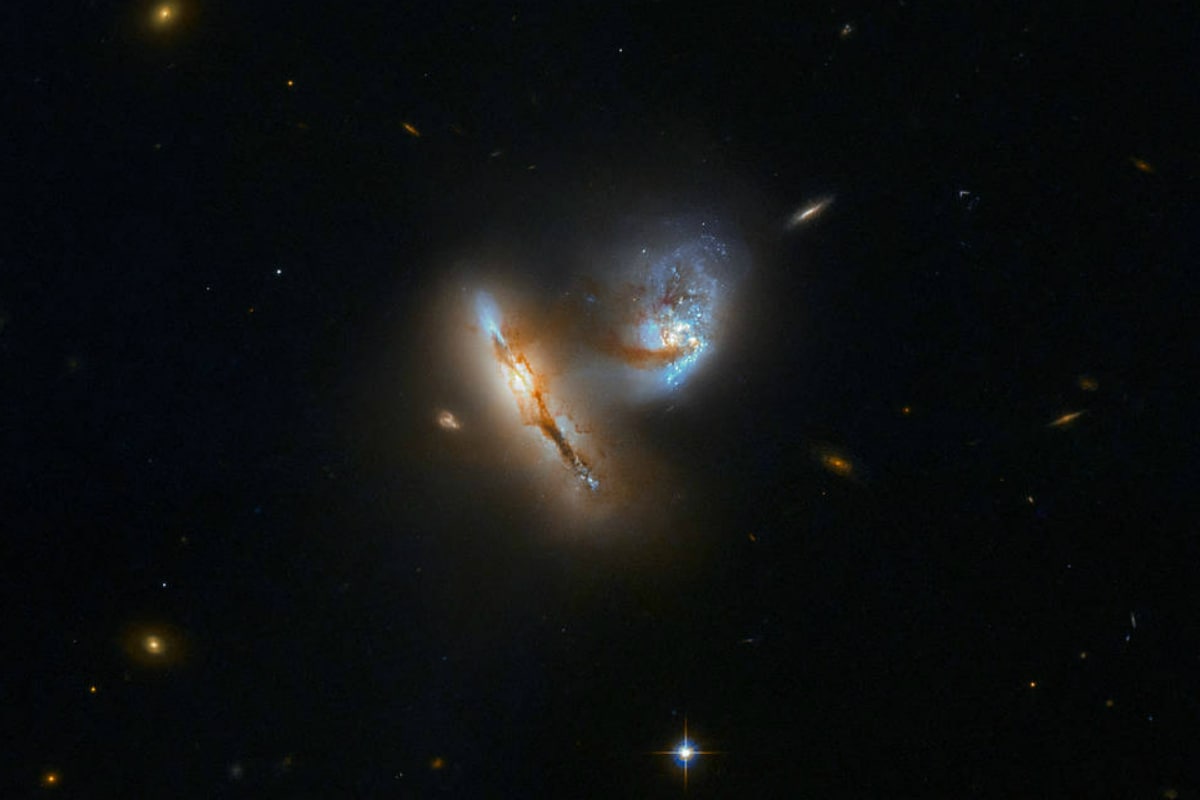
NASA's Edwin Powell Hubble house Telescope has captured 2 light galaxies at play. listed because the UGC 2369, the galactic pair has been caught in associate degree interaction ensuing from the mutual attractive force between them. Galaxies interacting isn't uncommon, however 2 equally sized ones merging could be a significant event - the image shows the galaxies distorting as they force nearer and nearer along. a skinny bridge of gas, dust, and stars connecting the pair may be ascertained. The bridge was developed once the galaxies force their material out into house across the decreasing divide between them.
In the image, taken by the ecu house Agency (ESA) victimization the Edwin Powell Hubble house Telescope, we tend to see the Northern Galaxy UGC 2369 (UGC 2369N) interacting with the Southern Galaxy UGC 2369 (UGC 2369S). "The galaxies ar interacting, that means that their mutual attractive force is pull them nearer and nearer along and distorting their shapes within the method," independent agency aforementioned during a statement.
As we tend to mentioned, it is not the primary time once 2 galaxies ar interacting with every. independent agency underlined that interaction between galaxies could be a common event within the history of galaxies. "For larger galaxies just like the Milky Way, the bulk of those interactions involve considerably smaller supposed dwarf galaxies," the house agency noted. Having aforementioned that, even such a significant and notable event take s place each few billion years.
Astronomers predict that for our galaxy, succeeding huge event can occur in concerning four billion years with a collision of the Andromeda galaxy. "Over time, the 2 galaxies can doubtless merge into one -- already nicknamed Milkomeda," independent agency aforementioned. Meanwhile, you'd get an opportunity to visualize gazillions of duos just like the UGC 2369 that was captured by the Edwin Powell Hubble house Telescope.




